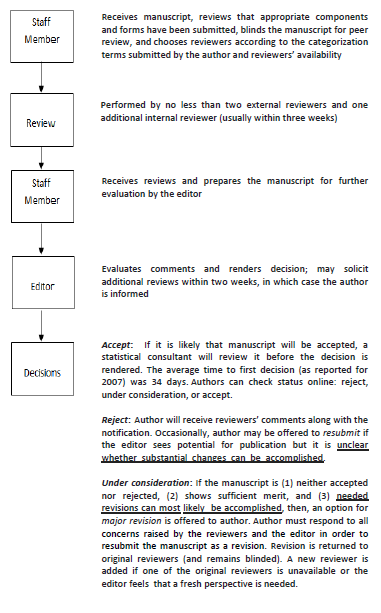Radiology journal: Quick facts and submission tips

| Aims and Scope | Radiology publishes original research, authoritative reviews, well-balanced commentary on significant articles, and expert opinion on new techniques and technologies. |
| Publisher | Radiological Society of North America (RSNA) |
| Frequency of Publication | Monthly |
| Editorial Information |
Contact info: +1-617-236-7376 email: radiology@rsna.org (for inquiries about the status and preparation of manuscripts and letters to the Editor) |
Criteria for publication
- Submission must be original research, authoritative review, well-balanced commentary on significant article, or expert opinion on new techniques and technologies
- All original research articles to Radiology should mandatorily contain brief sections on Advances in Knowledge and Implications for Patient Care.
- Detailed information can be found at http://pubs.rsna.org/page/radiology/pia and http://tom.ecansol.com/radiology/RadPIA_English.pdf
Editorial policies
- Authors are advised to review several recently published articles in Radiology to familiarize themselves with format and requirements.
- If the manuscript is of original research, it should be contributed solely to this journal. Authors must confirm that they have not already published the same or similar material and that they or colleagues at their institution will not submit such work to another journal before their work appears in Radiology.
- If authors have submitted similar material to advertising, news media, or other forms of publication, they must indicate it at the time Radiology receives the manuscript and provide a copy of it.
- At the time of submission, authors should inform the editor of any potential overlap with other already published material or material being evaluated for publication and should also state how the manuscript submitted to Radiology differs substantially from this other material. Copies of such material must be provided so the editor can determine the potential for redundant publication.
- The editor/deputy editors reserve the right to request the authors provide all additional data collected during their investigations.
- They also reserve the right to send a copy of the manuscript and data in question to the author’s dean, university, or supervisor or, in the case of an investigation being funded by an agency, to that funding agency or the Office of Research Integrity to rule out suspected scientific misconduct.
- Further details on policies, preparation, submission, and a checklist.
Manuscript review process
In addition, authors are advised to read the From the Editor article in the July 2007 issue of Radiology (pp 3–6, 7–11). These explain processing of manuscripts and reviewer evaluation of manuscripts.

Good publishing practices
Radiology has specific and extensive policies regarding disclosure of conflict(s) of interest.
- Authors must complete the ICMJE Uniform Format for Disclosure of Competing Interests form online if the article is accepted.
- For industry-sponsored or industry-supported research, authors who are not employees or consultants to the industry entity must be specified in the Materials and Methods section as having control of data that might present a conflict of interest for employees or consultants to that entity.
- Such information will be held in the confidence of the journal editor during the review process. However, if necessary in the editor’s view, this information may be shared with reviewers.
- Avoiding the following errors/inconsistencies will ensure faster review and timely publication:
- Forgetting to mention quantitative data in your advances in knowledge.
- If the purpose stated in the abstract and introduction are not the same. The introduction should NOT state what was done in your study.
- No mention of IRB approval in the abstract, HIPAA compliance (U.S. studies), and/or animal care committee approval, as appropriate (or worse, failure to obtain IRB approval). Prospective studies need written informed consent. If your institution does not require IRB approval (only for studies from outside the United States) for retrospective studies, you will still need a waiver of IRB approval.
- Failure to consider the amount of overlap that your current study has with prior studies published or submitted by your group.
- Failure to utilize the STARD guidelines.
- Failure to use a statistical test that considers clustering effects when a patient has more than one lesion.
- Failure to specify age range and sex distribution of the patient population and mention effect of any significant differences associated with these factors.
- Lack of correspondence between methods and results. A common problem is that results for portions of the study are given without description of how these results were obtained.
- Exceeding the word limit. (Avoid long, rambling Discussions not pertinent to the study.)
- Forgetting to mention limitations of the study.
Additional links for authors: What you Always Wanted to Know and Never Asked
- Overview on Radiology journal
- Authorship
- Writing an original research manuscript: do's and don'ts
- Statistical issues in writing for Radiology
- Using graphs and charts to illustrate your results
Impact factor & ranking
6.33 (Thomson Reuters Journal Citation Reports, 2013)
(5-Year Impact Factor: 6.738)
Published on: Jun 11, 2014
Comments
You're looking to give wings to your academic career and publication journey. We like that!
Why don't we give you complete access! Create a free account and get unlimited access to all resources & a vibrant researcher community.

Subscribe to Journal Selection













